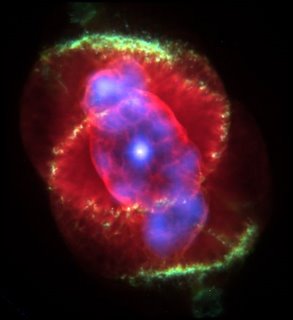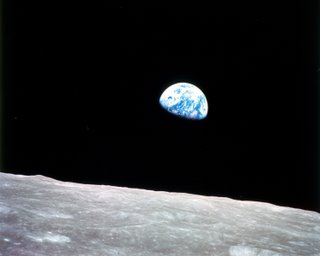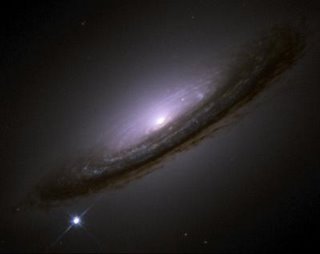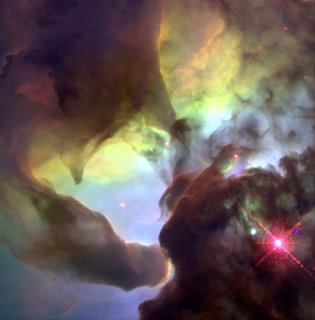1. Cat's Eye Nebula

2. Earthrise (taken by Apollo 8) - from NASA Historical Images

3. Gas pillars in Eagle Nebula (M16)

4. Hubble Ultra Deep Field (HUDP)
This picture looks back in time 13 billion years and despite covering a tiny fraction of the sky (3 arc minutes square) includes 10,000 galaxies! Those points of light? They're not stars...

5. Horsehead Nebula
The dark area that makes up the head is a dark nebula - a thick cloud of hydrogen gas and dust where new stars are being formed. The nebula can be seen here only because it blocks out the light of the emission nebula behind it.

6. Supernova 1994D in Galaxy NGC 4526
Supernovae are massive explosions, often the dying moments of a massive star (although SN 199D is a type 1a supernova, caused by an explosion in a white dwarf star). They shine only briefly but for those few days may outshine the galaxy in which they reside! Supernovae are hugely important 'creation' events, as the force of the explosion forms many of the heavier elements, blasting them into space. (Fusion in stars forms elements up to iron on the Periodic Table, but heavier elements, e.g. copper, tin, silver, gold, are not formed by fusion.)

7. Light echo from Red Supergiant V838
This picture is one of a dramatic series of images taken by the Hubble telescope in early 2002 and showing a sudden brightening of star V838 Monocerotis, lighting up the dust clouds around it. It is called a light echo because the pictures show a ring of illumination gradually expanding around the star as the light travels outwards.

8. ...a picture I would love to take!
Images like this always stump the kids..even when they should know the answer!
I'm sure you'll figure it out straight away.. but can anyone work out the exposure time?

9. The Ring Nebula, in the constellation Lyra
This is one of the most famous Planetary Nebulae, the gas and dust drifting away from the white dwarf (seen in the centre of the image) left behind at the end of a star's life. This is an almost true-colour image, the colours are from the different elements glowing in the dust (blue - hot helium, green - ionized oxygen, red - ionized nitrogen).

10. Twisters in the Lagoon Nebula
The Lagoon Nebula is one of only a few nebulae visible to the naked eye in the Northern Hemisphere and can be seen in the constellation of Sagittarius. Check out the larger picture and explanation.

(Note: all these pictures - except the star trails - are from NASA and therefore copyright-free)

3 comments:
Horse head nebula:
http://helios.augustana.edu/astronomy/mel-peterson/horse-800.jpg
Snap shot of big bang ie. Cosmic background explorer (COBE) images. One example here:
http://map.gsfc.nasa.gov/m_ig/030628/030628B_s.jpg
gravitational lensing
And of course Durham's very own millenium simulation:
http://www.rzg.mpg.de/projects/supercomputing/astro/MPA.White.html
Non space stuff, probably the best is the z-pinch experiment:
http://dorland.pp.ph.ic.ac.uk/magpie/links/zsparks.jpg
or inside the super kamiokande detector:
http://www.aip.org/png/html/super-k.htm
I remember the earthrise picture when it first came out, it was on the front page of the newspapers and the guys in the spacecraft reading from Genesis - I think they were there at Christmas or something. It was just such a strange and awe inspiring picture -reality reversed - earth rising as a moon. Thanks for finding some great pictures.
Thanks for the suggestions Matt. I certainly agreed with the horsehead nebula, a longtime favourite!
The COBE , and associated images are amazing but mostly from an astronomical POV, rather than an aesthetic one (I think!) and perhaps not as accessible to the non-physicist? The CMB is interesting though.. maybe I'll write about it next week!
Post a Comment